Jackie Robinson Museum Opening in New York, 75 Years After He Broke Baseball's Color Barrier
- Oops!Something went wrong.Please try again later.
- Oops!Something went wrong.Please try again later.
- Oops!Something went wrong.Please try again later.
Jackie Robinson forever changed Major League Baseball.
He was known for stealing bases when opponents least expected it and for other innovative tactics he used instead of sticking to how his position (primarily second base) was "supposed" to be played.
His exceptional talent reached unchartered territory in 1947, when he became the first Black player in modern Major League Baseball after joining the Brooklyn Dodgers.
To mark the 75-year anniversary of Robinson desegregating the league, the Jackie Robinson Foundation is opening a museum in his honor in New York City. The ribbon-cutting ceremony was Tuesday, led by Robinson's widow, Rachel (who recently turned 100), and his son David.
The ceremony was followed by a grand opening event on Wednesday, during which the museum premiered the documentary "After Jackie" by the sports media company Uninterrupted in partnership with Chevrolet. The 90-minute film details a wave of talented Black baseball players who entered the league after Robinson and how they demanded equality on and off the field.
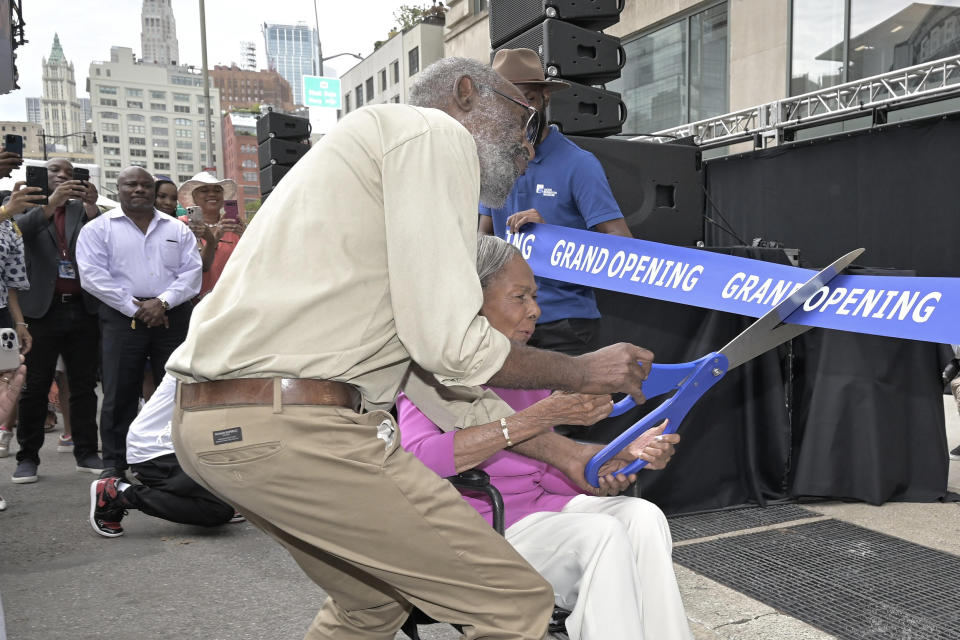
CC Sabathia, a pitcher for 19 seasons with teams including the New York Yankees before retiring three years ago, told TODAY in an interview that he and other Black players are Robinson's legacy.
"I don't think it's just a baseball story," he said. "I think it's an American history story. Without him, obviously, I wouldn't be able to live my dream and do the things that I wanted to do. I think his legacy, for me, means everything."
How the Jackie Robinson Museum came to be
The new museum, opening to the public in early September, is on the main floor of the building where the foundation is headquartered in lower Manhattan. The museum has been years in the making and had some significant delays to the point that it almost looked like it wouldn't happen, said Della Britton, president and CEO of the Jackie Robinson Foundation.
"Tooting the horns of an amazing staff, through tenacity," is how the museum was finally pushed through, Britton said in an interview with TODAY. "Even when our long-term landlord here said, 'Listen, you know this hasn't happened yet. You want to think about maybe moving on,' and I said, 'We're going to get this done.'"
Britton said Rachel Robinson gave her a specific vision for the museum, and Britton included those notes in her plans as she worked with a curator to develop the museum exhibits.
What's on display at the new Jackie Robinson Museum
The main room of the Jackie Robinson Museum has four pillars: entrepreneur, activist, soldier and family. Britton said she intentionally structured the museum that way to make a strong first impression when people walk in.
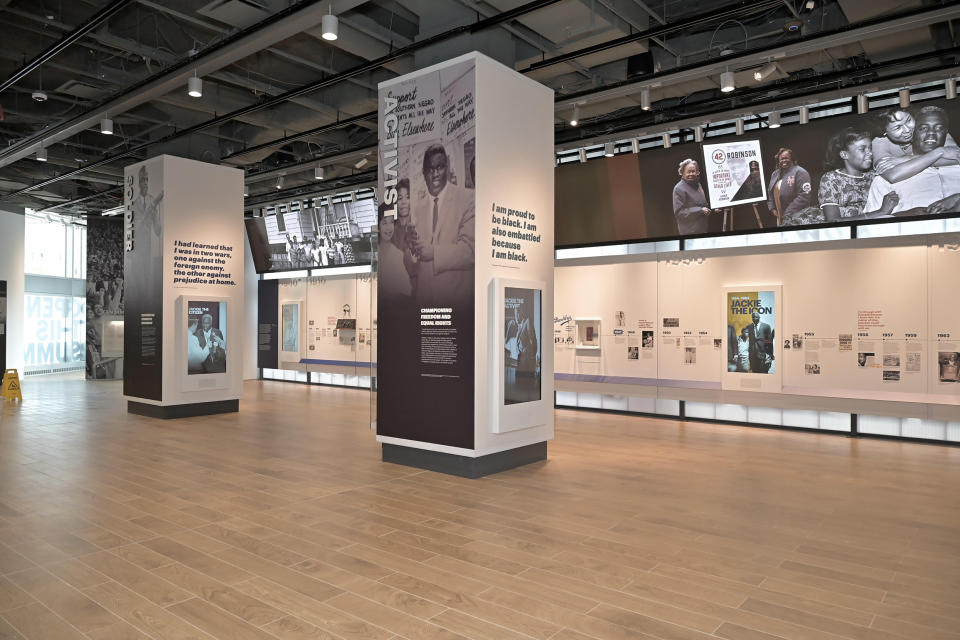
"We wanted that first impression to be, wow, he did all those things on all those different fronts," Britton said. "He was doing activism — and it was really more simultaneous, it wasn't sequential — the same time he was in the military, he was doing activism because he was petitioning to make sure that there was equality in the military. ... We wanted people to walk in and say, entrepreneur, we didn't know he was an entrepreneur: go to that column and read."
Robinson was court-martialed while in the military after refusing to move to the back of a military bus; he contested it and won, knowing that segregation of military buses was not allowed.
According to the museum exhibits, Robinson also started a bank when he learned established banks were denying mortgage loans to Black people. He started a housing developing corporation and built 200 units in New York City.
Of course, the museum also delves into his athletic career. He is the only four-sport varsity letterman at UCLA (baseball, basketball, track and field, and football). He met his wife during his senior year when she was a first-year nursing student.
In 1942, Robinson worked out for the Chicago White Sox and manager Jimmy Dykes is quoted as saying, "Geez, if that kid was white, I'd sign him right now." But it wasn't until five years later when Robinson caught a break with the Brooklyn Dodgers at the major league level.
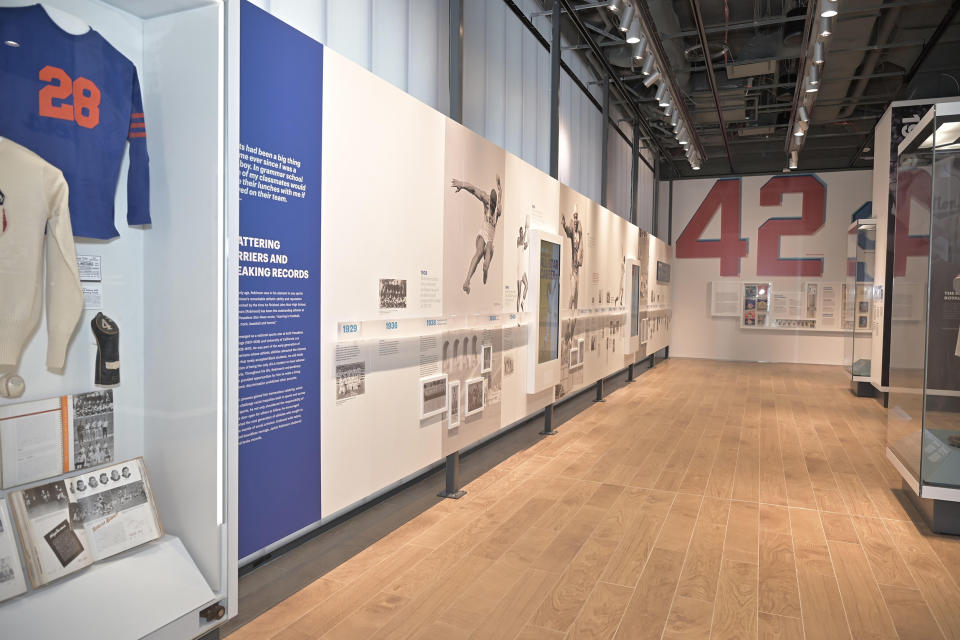
On display at the museum is a game-worn home jersey (1947), Robinson's military uniform (1942-1944), his MVP and Rookie of the Year trophies, and his Presidential Medal of Freedom (1984). The collection features 4,500 artifacts that will be cycled through over time, 40,000 historical images and more than 450 hours of archival video.
"What do we want people to take away: We want them to learn about him and his life, because there are a lot of people who don't know. But we also want them to be inspired, to continue the work, to go forward and to start to get involved and become involved civically."
There's a "speak out, stand up" wall at the museum to encourage people to commit to a social justice initiative they care about and hold them accountable to follow through on it, Britton said.
"It's for groups to come in and take on an issue, whether it's LGBTQ, whether it's global warming and then — it's actually also a sort of a museum strategy to get people to stay involved, which is having a competition," Britton said of the new program.
"We're trying to figure out whether at the end of the semester, or the end of the year, and say, 'OK, what was the project you took on? Did you accomplish it? The metrics, how did it go?' And then have an award ceremony to say, this group said that they were going to clean up their neighborhood or they were going to put a basketball court, a gymnasium in your school or something. And so that's the way we want people to be engaged, to be proactive, again, in the image of Jackie."
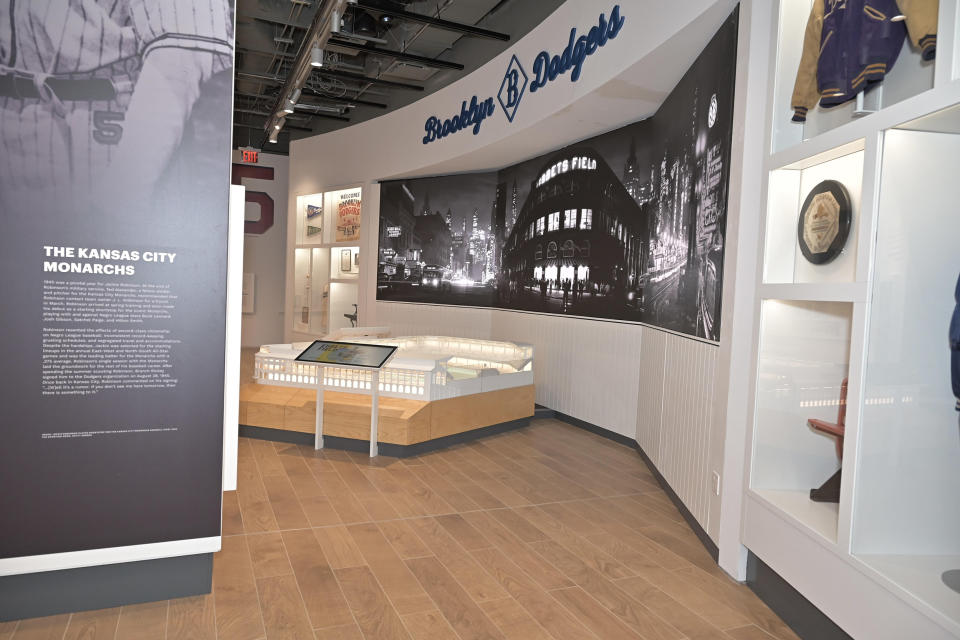
'After Jackie'
The grand opening was followed by a reception across the street from the museum. The reception included a screening of the documentary "After Jackie," a detailed account of Black baseball players Curt Flood, Bill White and Bob Gibson, who entered the league after Robinson. They say in the film that Robinson, who died in 1972, was just the first step and they still had a significant amount of discrimination to overcome, such as not being able to stay at the same hotel as their white teammates, not having access to play certain positions or engage in luxuries available to other players, purposely being hit with balls while on the field, and a slew of death threats.
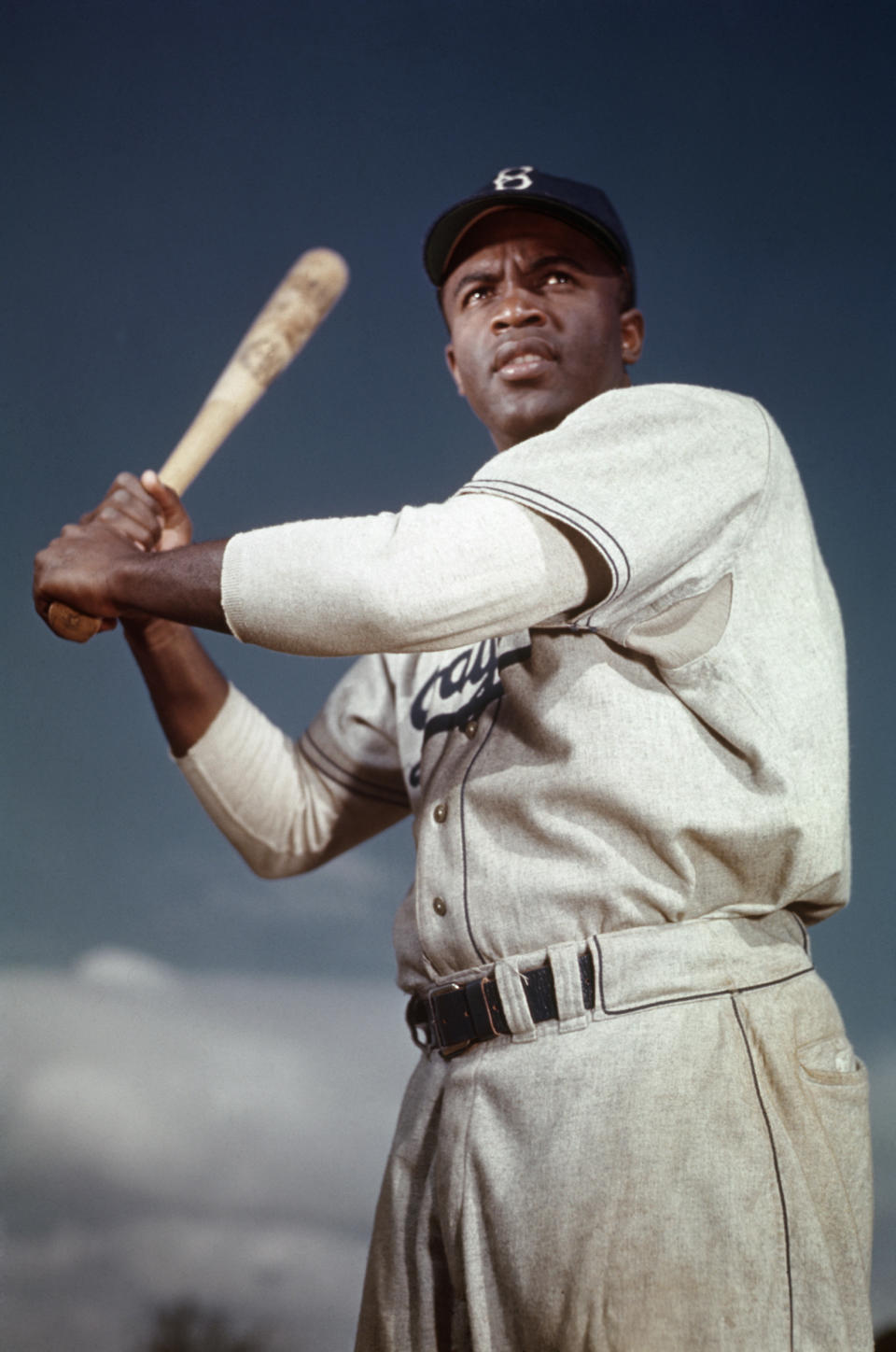
Sabathia, the former pitcher, was recently appointed special assistant to the commissioner of MLB to help grow and promote equity within the game. Sabathia also serves as vice president of the board of directors of the Players Alliance, a nonprofit that addresses barriers to equity and inclusion in baseball.
Sabathia said Black players face challenges to this day.
"If you look around the league, there's no utility players that are Black," he said. "There's never, like, a 25th, 26th man on the roster, so you always pretty much have to be the best player if you want to play in the league."
Jamal Henderson, chief content officer at Uninterrupted’s parent company, SpringHill Company, agreed with Sabathia that it's hard on Black players: "What I always take from the Jackie Robinson story is that, yes, he was the first but also he did so much for the game. And he did so much for brothers that came after him. And that’s really what the film was about: It was hard on him, it was still hard on the next generation. And it’s still hard on the brothers playing today.”
Sabathia said his goal in working with MLB is "to give the guys more opportunities to play and more opportunities to play more positions.”
"For me, I would love to see the game where it was when I grew up in the late '80s, early '90s, when we made up a lot of the representation of the league, and it was super diverse."
The Jackie Robinson Museum will be open to the public Thursday through Sunday, beginning the week of Sept. 5. Admission will be $18 for adults and $15 for seniors, students and children ages 5-17.

